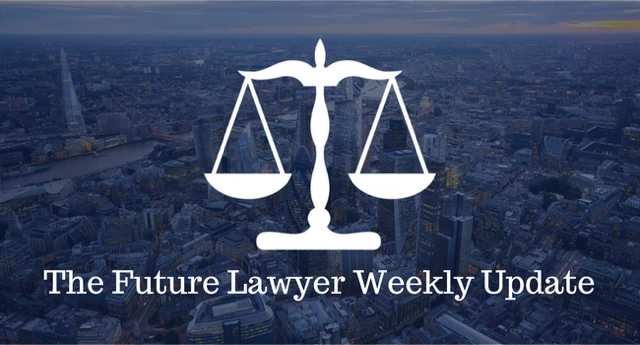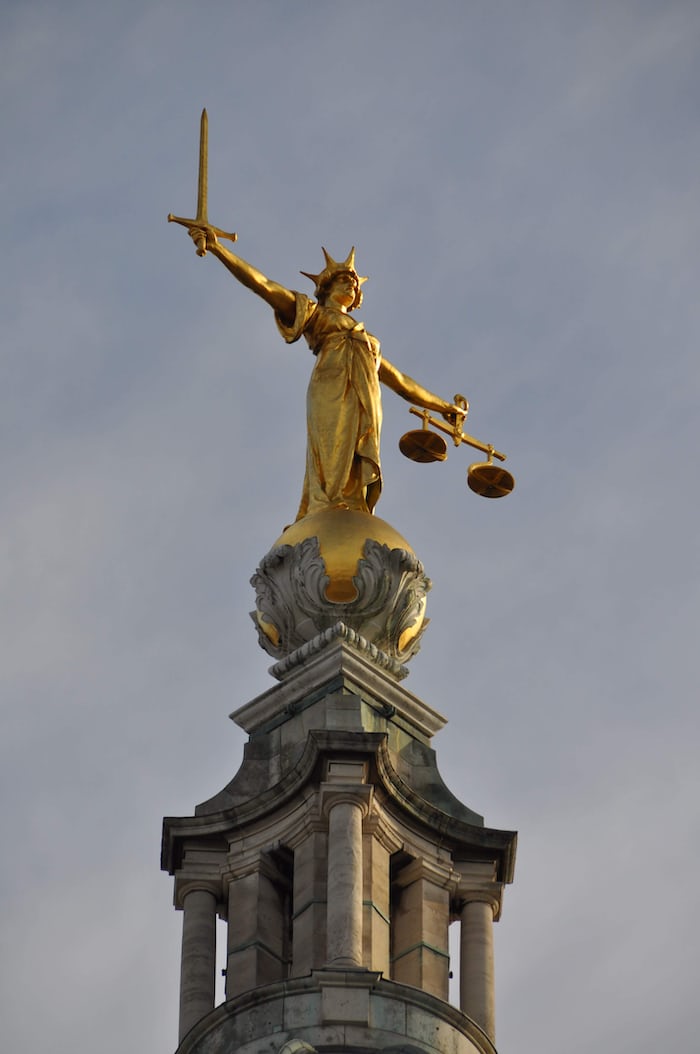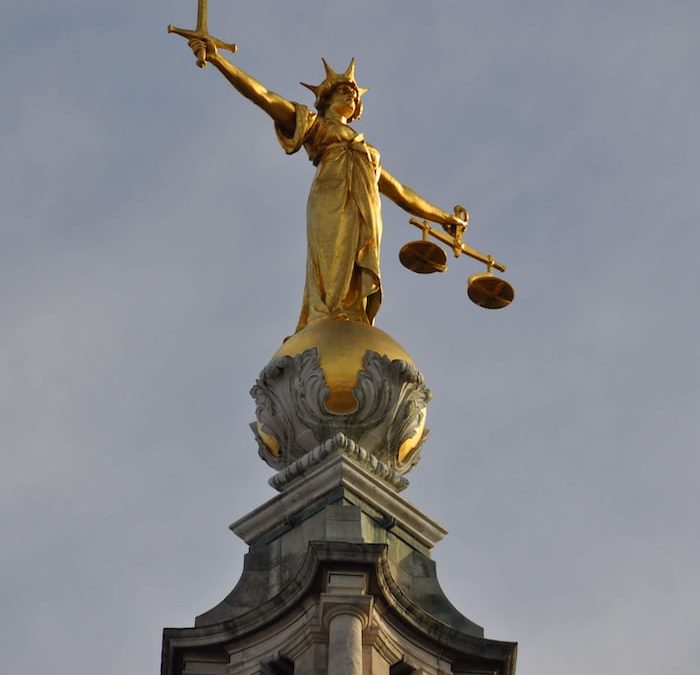
The Future Lawyer Weekly Briefing- w/c 29th August
August 29, 2022
Judicial Review: an overview
September 4, 2022
Article written by Laetitia Ponde Nkot
The Crown Court (Recording and Broadcasting) Order 2020 permitted sentencing remarks of the High Court and Senior Circuit Judges in certain criminal cases to be filmed and broadcast to the public. The decision, which followed a change in the law, is intended to help the public better understand how sentencing decisions are made.
Previously, proceedings were broadcast only in the Supreme Court. The cameras had been authorised in 2009, then at the Court of Appeal four years later. John Battle, Head of Legal and Compliance at ITN, and Chair of the Media Lawyers Association, called it ‘a landmark moment for open justice’. He said: ‘Court reporting is vital to democracy and the rule of law and this long-overdue change is welcome.’
Approved media can apply to the judge to film the sentencing remarks of a case. They can only record sentencing comments of those cases being heard by: a High Court Judge, a Senior Circuit Judge who is also a Resident Judge, and a Senior Circuit Judge whose base court is the Central Criminal Court (Old Bailey) . They cannot film any other sentencing remarks, including those heard by a retired High Court Judge.
Who can film?
Only the following consented media parties , agreed with the Lord Chancellor, can apply to film sentencing remarks: BBC, ITN, and SKY.
Nobody else can film, broadcast or take photos of any hearing at any time.
Authorised media parties decide whether to include a request to broadcast live when they apply to the judge. The judge decides whether sentencing can be broadcast live or not, taking into account reporting restrictions in place.
Only the judge and their sentencing remarks can be filmed. Authorised media cannot film any other court user including defendants, victims, witnesses, jurors and court staff. Filming is subject to the usual reporting restrictions, so authorised media may need to edit footage before it’s broadcast.
How apply?
Authorised media must apply no later than 5 working days before the sentencing hearing. The judge makes a provisional decision at least 2 days before the hearing, and the final decision on the day of the hearing. They consider applications out of court.
The prosecution, defence, victim or his/her relatives cannot make representations. There is no right of appeal against the judge’s decision.
Broadcasters make footage publicly available online within one working day of the hearing on YouTube, and they’ll normally make the footage available to the public on a hosting platform until the conviction becomes spent under the Rehabilitation of Offenders Act 1974.
First broadcasted trial
On 22 July 2022, The sentencing at the Old Bailey on Ben Oliver, who pleaded guilty to the manslaughter of his grandfather in South London, was the first UK broadcasted case.
Judge Sarah Munro’s remarks were the first to be broadcast live on news channels. Munro sentenced Ben Oliver, 25, affected with autism, to life in prison with a minimum term of 10 years and eight months for the manslaughter of his 74-year-old grandfather.
What about the defendant’s rights to private life?
Lord Chief Justice Lord Burnett said: ‘Open justice is important, and the sentencing of serious criminal cases is something in which there is a legitimate public interest. It has always seemed to me that this is a part of the criminal process that can be recorded and broadcast in many cases, but not all, without compromising the administration of justice or the interests of justice.’
Bar Council ‘s view
Amanda Pinto QC, chair of the Bar Council, alerted that the legislation could turn sentencing into an ‘armchair, spectator sport’. She said: ‘This initiative will help people understand the realities of our criminal justice system. However, given that it is only the judge’s sentencing remarks that will be televised, the public may well not fully appreciate why a particular sentence has been given.
Law Society’s opinion
Simon Davis, president of the Law Society, said: ‘Done sensitively, and with the appropriate reporting restrictions, broadcasting from the courts during any proceedings such as sentencing could add significant value and assist in the rule of law is respected. Which proceedings are broadcast must always be considered carefully. It is important to avoid putting the fairness of trials at risk – or to create undue stress for defendants, witnesses, and victims alike.’
Campaigners for justice ‘s opinion
Campaigners fighting miscarriages of justice said the reforms do not go far enough. However. Emily Bolton, director of law charity Appeal, said: ‘This proposal…will lead to only a fraction of what goes on in our courts being visible to the public. For real transparency that allows miscarriages of justice to be exposed, the Ministry of Justice must also end the reckless destruction of trial audio recordings after just seven years and make transcripts accessible and affordable.’
A victory for TV Media
The introduction of cameras follows a long campaign for almost 20 years by the major TV news broadcasters, including Sky News, BBC News, ITN, and PA Media. All welcomed the change to the law after fighting to secure the right to film sentencing and, they said, increase transparency and open justice.
Head of Sky News John Ryley said: ‘This is a very significant moment for the opening up of our courts. It’s a further step towards transparency of a really serious institution, the judicial system.’
For years the judiciary opposed court cameras, fearing for the distress of victims and witnesses, the temptation for lawyers to showboat, the danger of confidential documents being revealed and the worry that the courts could be turned into theatres of entertainment.
Cameras were allowed in Scottish courts in 1992 and are permitted in courts around the world to varying degrees, notably in Australia, South Africa, the Netherlands, and Ukraine.
In the United States, some trials are broadcast in full and often in painful detail. Whether that could happen here, the Lord Chief Justice said: ‘Your question really I think asks me whether I think we will be broadcasting criminal trials in the same way as happens in one or two jurisdictions around the world. My own, but fairly strong view, is what we see happening around the world illustrates why that can be quite damaging.’
The Secret Barrister’s point of view
The Secret Barrister said, ‘ even if this initiative is simply something shiny to cynically wave at journalists in the hope of distracting from the real problems, it doesn’t follow that it’s necessarily a bad idea. If it has the effect of increasing public awareness of the sentencing process, that is an evident good.’ The concern is that he is not convinced it will do that.
According to him, the main difficulty is in the compromise that has had to be reached to avoid deterring victims and witnesses from attending court and engaging with the criminal process. Victims often attend sentence hearings, and have the right to read their victim personal statements aloud in court. It is plainly right that they not be dissuaded from doing so by a fear of having their most intimate trauma broadcast or retweeted to the nation.
So it is that the decision has been taken not to broadcast the prosecution advocate opening the facts at the sentencing hearing (during which the victim’s personal statement will be read), nor the defence advocate advancing mitigation, but solely the judge’s sentencing remarks.
However, sentencing remarks, while essential for anybody wishing to report or pass comment on a criminal case, are not by themselves sufficient to give a comprehensive understanding of what has happened in a case. A sentence hearing is a dynamic process. The advocates will advance often-conflicting submissions as to how particular case law or Sentencing Guidelines apply – whether a certain aggravating or mitigating feature is present, for instance, whether an offence is a ‘Category 1’ or ‘Category 2’ offence, whether a victim is ‘particularly vulnerable’ or just plain ‘vulnerable’, whether a defendant is ‘dangerous’ and so liable for a particular kind of sentence. The judge will usually interrogate these submissions, challenging the advocates to justify their position.
There will be mitigation advanced, often referring to detailed pre-sentence, psychiatric or psychological reports, as well as character references, letters from the family and so forth.
And the thing about sentencing remarks is that they don’t – can’t – rehearse everything that has been said in a sentence hearing. They only set out the headlines. They should, plainly, explain why a particular sentence has been passed, but they don’t include all the evidence that was heard at trial, all the arguments that were advanced by the prosecution and defence during the sentence, or a full examination of the law.
As a result, it is difficult to imagine how lay people could fully grasp decisions given by judges.
Live hearings, the future of law?
Earlier this July, the master of the rolls, Sir Terence Etherton MR, said he was keen to allow the live-streaming of family cases which reach the Court of Appeal, a practice which is currently forbidden. ‘There are some family cases that are really important … and people want to know how we are doing things. The motive for live-streaming is people should be able to see how we are doing our job,’ he said.





